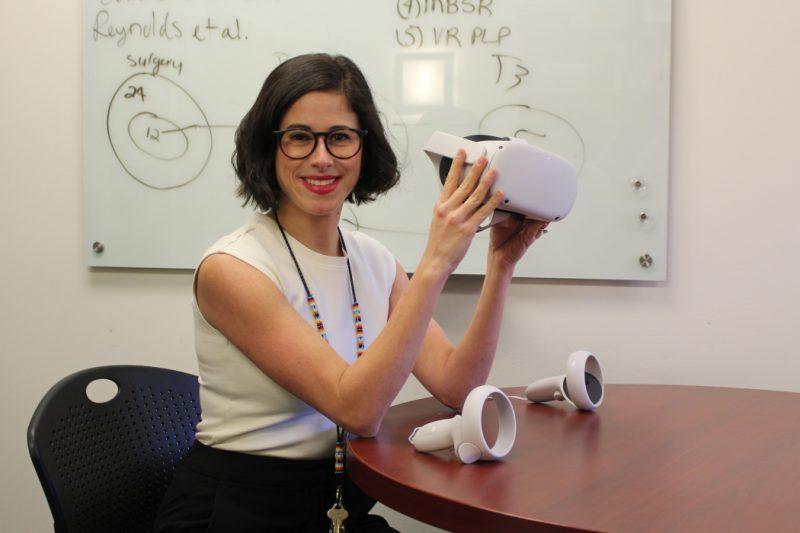:format(jpeg)/cloudfront-us-east-1.images.arcpublishing.com/tgam/Z5TLKTWLDRPDTD2QUH3MAZEYVY.JPG)
Scientists are keeping a close eye on a new variant, BA.2.86, which is as different from today’s predominant strains as the original Omicron was from its predecessor, Delta.Spencer Colby/The Canadian Press
COVID-19 infections are rising again in Canada, just as children return to school and adults prepare for indoor gatherings where respiratory viruses of all kinds spread more easily. Scientists the world over are also keeping a close eye on a new variant, BA.2.86, which is as different from today’s predominant strains as the original Omicron was from its predecessor, Delta.
But experts say Canadians are better off preparing than panicking. The vast majority are safer from COVID today than in the early years of the pandemic, thanks to a combination of vaccine and infection-induced immunity. Here’s what everyone needs to know about COVID and other respiratory viruses as we head into the fall.
The state of COVID now
COVID infections and related hospital admissions are creeping up again, according to the Public Health Agency of Canada (PHAC). The number of hospital beds across the country occupied by COVID patients in the week ending Aug. 29 was 1,836, up from 1,723 the week before. Rates for people in hospital have been climbing slowly since the start of August, after six months of decline.
Fortunately, only 60 of those patients – about 3 per cent – were sick enough to require an intensive-care bed in the most recent week. The virus continues to prey overwhelmingly on the elderly and immunocompromised.
The test positivity rate, a useful barometer of COVID spread, is also rising. PHAC’s most recent epidemiological report put the rate at 11.6 per cent nationally, up from 8.4 per cent as of Aug. 5, and 5.7 per cent as of July 8.
“That is an underestimate of what’s actually circulating in the community,” said Donald Vinh, an infectious-disease physician at the McGill University Health Centre in Montreal, because most people with mild or moderate COVID infections aren’t tested at labs any more. Wastewater testing is also pointing to an increase in infections, Dr. Vinh said.
Sarah Otto, a professor of evolutionary biology at the University of British Columbia, suspects infections are up because our body’s defences are down. “Frankly, many of us have not had a vaccine for a very long time and have not had an infection for a long time,” Dr. Otto said. “So our immunity is really waning at this point and making us susceptible again.”
Watching out for BA.2.86
What’s not behind the modest increase in COVID in Canada is BA.2.86, the new Omicron sublineage that has COVID researchers on high alert. So far only a single case has been identified in Canada, in a patient from British Columbia’s Fraser Health Region who had not travelled recently and wasn’t sick enough to be admitted to hospital.
Scientists are concerned about BA.2.86 because its genetic sequence has more than 35 amino-acid changes from XBB.1.5, the sublineage that predominated until recently. The changes amount to an evolutionary leap that could help it evade immunity from vaccines and past infections. British officials cited BA.2.86 in their decision this week to start the country’s fall COVID and flu vaccination campaigns early on Sept. 11.
Howard Njoo, Canada’s deputy chief public health officer, said officials are “hoping for the best, but preparing for the worst,” when it comes to BA.2.86.
There are reasons for cautious optimism, according to Dr. Otto, who tracks the evolution of SARS-CoV-2 as a leader of CoVaRR-Net, the Coronavirus Variants Rapid Response Network.
BA.2.86, which was first identified in Denmark last month, hasn’t spread like wildfire the way the original Omicron did when it emerged in late 2021, which suggests BA.2.86 may not have a transmission advantage over the predominant variants. As of Monday, just 37 cases from 10 countries have been reported to an international repository for COVID genetic sequences.
“I think we are beginning to get signs that it’s really not spreading as fast as we feared at first,” Dr. Otto said. The next couple of weeks will tell the tale, she added.
A “two-for-one” fall vaccination campaign
Dr. Njoo said the goal for this fall’s vaccination campaign will be to offer flu shots and COVID boosters at the same time wherever possible. “If people come in, they can do a two-for-one. So that’s what we’re obviously pushing for.” Provincial flu-shot efforts usually begin at the end of October, but Dr. Njoo said some jurisdictions are looking at starting their dual campaigns a few weeks early.
Canada’s National Advisory Committee on Immunization (NACI) recommended in June that all age groups for whom COVID boosters are approved should get one this fall if they’ve gone more than six months without a shot or an infection. Health Canada is currently reviewing submissions for new formulations of vaccines targeting the XBB.1.5 variant from three companies: Pfizer, Moderna and Novavax.
Although XBB.1.5 has already been eclipsed by another XBB offshoot, EG.5, Matthew Miller, director of the Michael G. DeGroote Institute for Infectious Disease Research at McMaster University, predicted the reformulated shots will still hold up well against severe disease.
“What we’ve repeatedly seen in studies that have looked at vaccine effectiveness at the population level is that even when there’s a mismatch of the vaccine antigen relative to the virus that’s circulating, time since last vaccination is the most powerful predictor of protection,” Dr. Miller said.
What you need to know about COVID-19 as we head into fall - The Globe and Mail
Read More

No comments:
Post a Comment